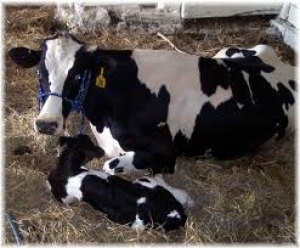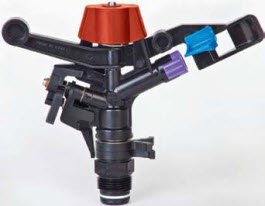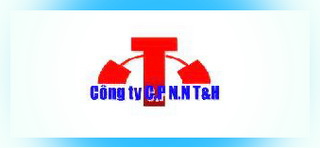Heifer care and management
Plan Now To Improve Calving Weight

“The breeding programme; which bull was used to breed a cow or group of cows, determines the genetic potential of the newborn calf or group of calves,” says Barry Yaremcio, beef/forage specialist with Alberta Agriculture and Rural Development. “Birth weight, frame size and growth rate are all genetically controlled and cannot be changed. On the other hand, management on farm or on the ranch impacts the animals’ growth potential. You can affect the size and weight of the calf come weaning time and, therefore, your profitability. If poor decisions are made, the genetic potential of the calves will be negatively affected.
“Management changes must be evaluated, not just made on a whim. The change or changes should move the operation towards long term goals and make economic sense. Be it a change in bull genetics, or changes in the feeding and grazing programmes, the short and long term benefits need to be greater than the added costs or potential down side.”
There are several things producers can do to improve calf weaning weights without wholesale changes:
Watch body condition score of the cows prior to calving - colostrum quantity and quality are impacted by body condition of the cow. If a cow is thin, less colostrum is produced, reducing the passive immunity provided to the calf. This can lead to a greater risk of disease or infection in these calves.
A cow in good condition is able to mobilize fat reserves. A pound of fat provides enough energy to produce seven pounds of milk. This is very important for the first 12 weeks of lactation when feed intake is limited.
Castrate or ring bull calves at birth – the practice of leaving bull calves intact until weaning to improve growth rates has been disproven. Bull calves do not reach puberty until 9- to 10-months-of-age. At puberty, bull calves start producing hormones to increase growth rates. Unfortunately, most calves are castrated before this time.
As bull calves grow, the stress associated with castration increases. An 8- or 9-month-old calf may experience reduced average daily gain of 0.3 to 1.3 pounds per day throughout the 30-day period after castration, adding up to a total ‘lost’ gain of 39 pounds.
Move cow calf pairs to a clean open area – keeping newborn calves in a tight pen with many other animals presents ideal conditions for diseases to spread. If possible, move cow-calf pairs to clean pens away from cows that have not calved, or to pastures. Minimizing calf contact with other animals, and standing water puddles contaminated with urine and manure, reduces disease pressure.
Use a fortified trace mineral salt with selenium – in most parts of Alberta, copper, manganese, zinc and selenium are deficient. Cobalt and iodine are virtually absent from all forges and grains. The use of a cobalt (red) or cobalt/iodized (blue) salt does not provide any of the four trace minerals mentioned above.
Changing from a blue salt on pasture to a fortified trace mineral salt with selenium resulted in an additional 20 pounds of weaning weight. There can also be improvements in cow fertility when the trace mineral salt with selenium is fed year round.
Develop a water system where cows do not walk into the water supply – water quality impacts average daily gain. Work done in the Barrhead/Westlock area in the early 1990s, found an improvement in calf growth rate if stock drank from a nose pump or from a storage tank. Over the grazing season, there was a 20 pound improvement in calf weight gain.
Creep feed calves – cow milk production peaks about eight weeks after calving. After this, milk yield declines. Creep feed should be provided when nutrients from the fresh grass and milk do not provide what the calf requires. Grazing management, weather, moisture and pasture fertility all impact when the creep feed should be provided.
Calves that consume creep feed prior to weaning have less difficulty adjusting to a ration that includes grain after weaning.
Manage forage resources – let the grass grow in the spring before turning the cows out to graze. There should be a minimum of three to four leaves of new growth to allow the plant to start replenishing food reserves in the root zone. For continuous grazing systems, every day the cows are turned out too soon in the spring, will result in a reduction of fall grazing of two to three days if a continuous grazing system is used.
Forage quality drops rapidly after the seed head has emerged from the boot. The use of rotational grazing to allow plants to recover after grazing events and to keep grass vegetative, maintains quality and increases potential yield. When a seed head is fertilized, the plant allocates nutrients to fill the head rather than initiating vegetative growth; overall yield potential is reduced.
Minimize weaning stress – vaccinating calves four to six weeks prior to weaning provides a higher level of immunity compared to calves vaccinated at weaning. Having a stronger immune system helps combat disease and the associated reduction in animal performance.
“Prior to weaning, move the calves and cows into the pens or corrals where the weaned calves will stay after weaning,” says Mr Yaremcio. “Let the cows teach the calves where the feed bunks, feeders, water bowl and loafing areas are. When the cows are moved out of the pen, the calves know where everything is. Less stress results in less illness and reduced performance.”
Once weaned, place the cows in an adjacent pen to the weaned calves. Allowing the two groups to see each other and touch noses also reduces stress.
“Even if you are selling the calves at weaning, inform the buyers that the calves have been vaccinated,” says Mr Yaremcio. “This information may entice the buyers to add a few cents a pound to the settlement price.”























